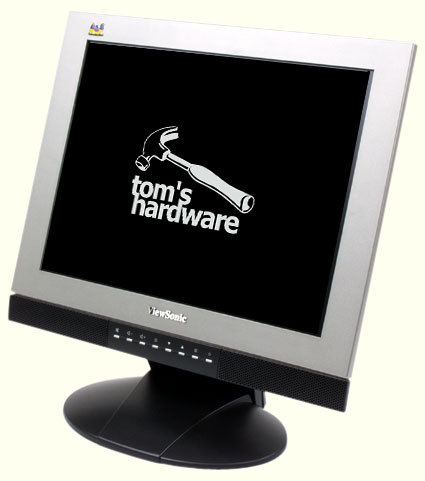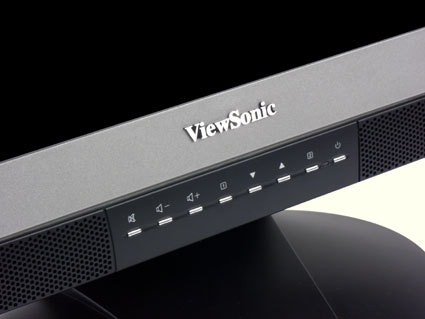Comparison Of 15" LCD Monitors - Part I
Viewsonic VX500
The VX500 has two burdens to bear. First, ViewSonic is trying to position itself as a high-end manufacturer. Secondly, MVA is very expensive technology with a disappointing history. However, we were pleased to note that the VX500 was better than the VP150M, which it replaces. In fact, it draws a lot of attention back to the alternative MVA technology.
Let's start with its outward appearance. Since it's one of the highest-priced monitors in this comparison, its specifications ought to justify the extra money spent on it. For example, it comes furnished with two ports, one analog and one digital. Likewise, two speakers are included with the monitor, even if they don't quite meet the same quality standard as the panel itself, and are primarily a marketing ploy. After all, people with pockets deep enough to afford a high-end display like this generally have enough spare change left over to afford a decent speaker set. Unlike its predecessor, the VP150M, the VX500 isn't pivot-enabled. That's no big deal, though, considering how useless that feature is on a 15" monitor. In any case, the VX500 remains the most impressive monitor on paper.
And, lo and behold, for all its MVA technology, the VX500 is short of being an ideal monitor. Yet again we find a case where theory and practice are worlds apart. The first flaw - unfortunately a recurring one - is the afterglow. Even if it's more brief than most of the monitors we tested here, it's still hard to overlook, particularly since it's longer than that of the better TN + film monitors. The afterglow is really intrusive in gaming situations. When surfing the Internet, however, it's less noticeable than with the TN monitors. The best explanation for this anomaly is the fact that the transitions are often more abrupt - from black to white. In games, however, the transfer from one hue to another is more progressive.
The official contrast ratio of 400:1 is really embarrassing. Compared to the rest of the TFTs we tested (with the notable exception of the Eizo L365) this is theoretically the best ratio to be had. In reality, though, these values are misleading. In fact, we discovered that, despite its ability to display lighter hues perfectly, this display has serious problems displaying darker shades, which often appear black. The only way around this is to increase the brightness setting and the gamma values in the game itself in order to see anything at all.
The viewing angle is good (you can read text on the display from just about any angle) even if the image isn't quite the same when viewed from a different angle. Then again, ideally, you would be seated directly in front of the monitor at work anyway. Even the most minimal variation would then be felt and unconsciously corrected immediately.
So, no, MVA isn't the be-all and end-all of monitor technology. No matter how impressive its specifications might be, simpler TN + film displays stack up better than this pricey luxury monitor. It really gives us cause to ponder what sort of a future MVA truly has. After all, the VX500 is the best of its breed and is still trumped by TN + film monitors such as the Eizo.
Get Tom's Hardware's best news and in-depth reviews, straight to your inbox.

